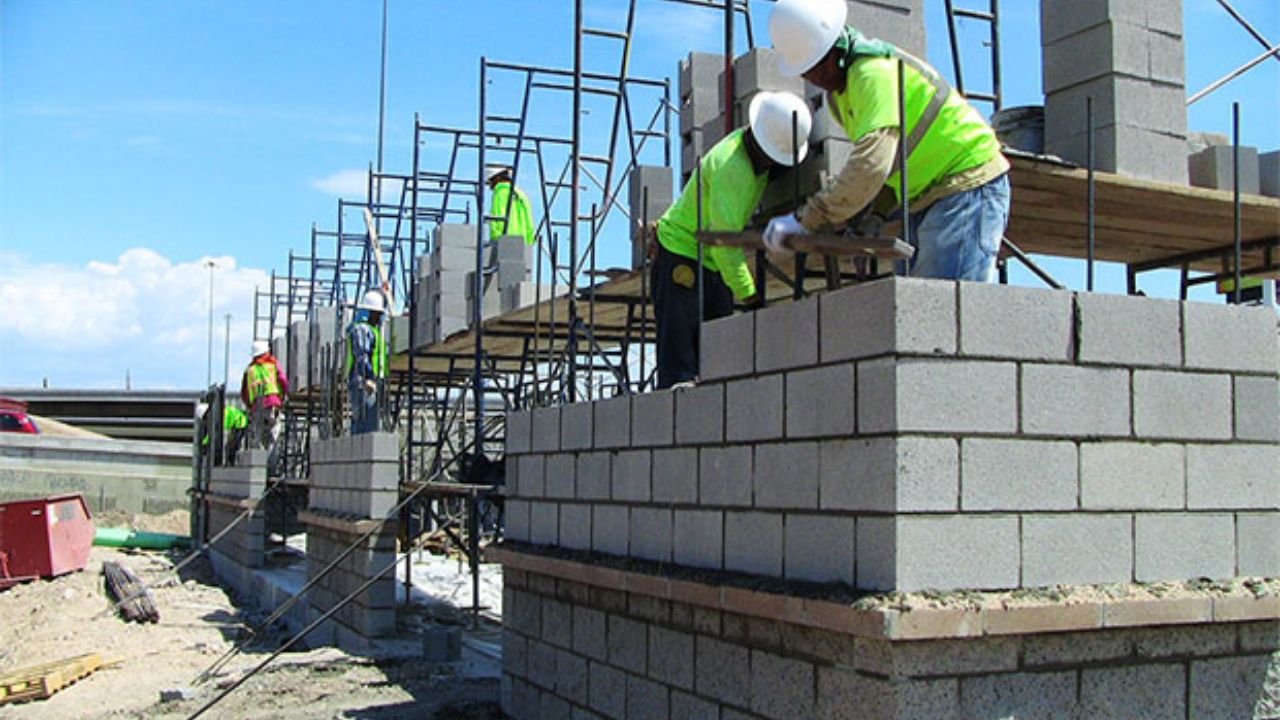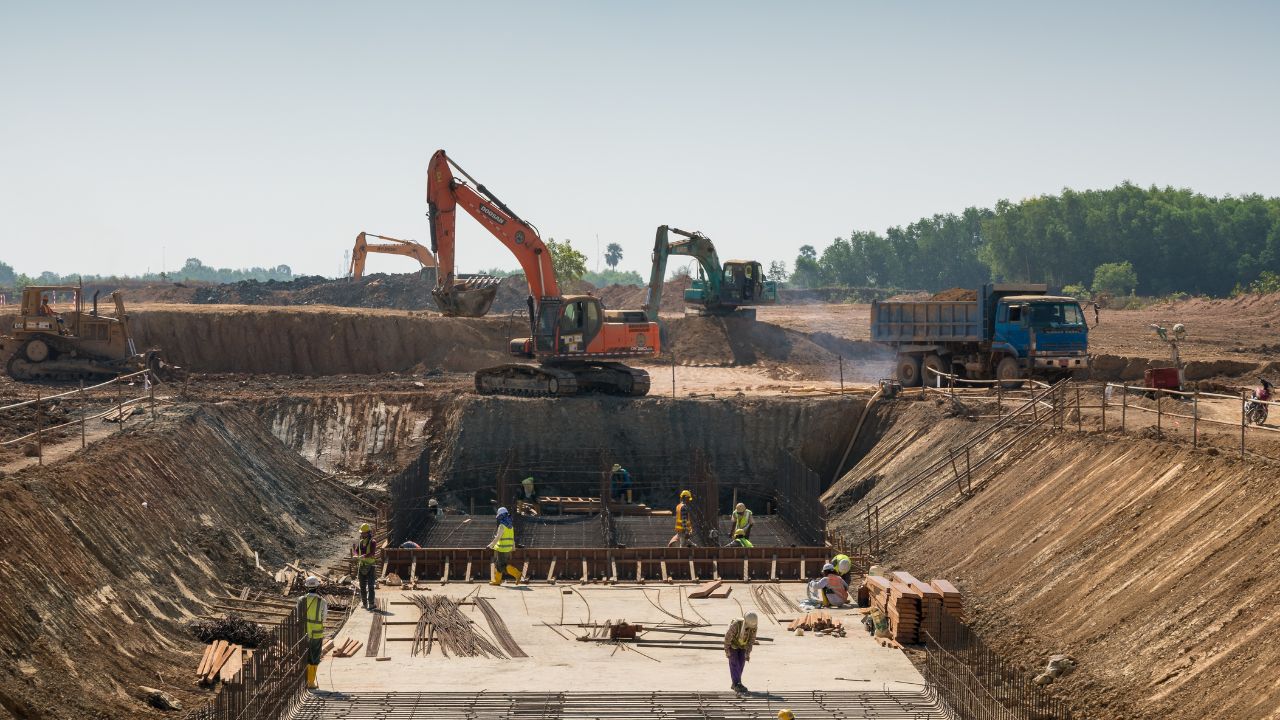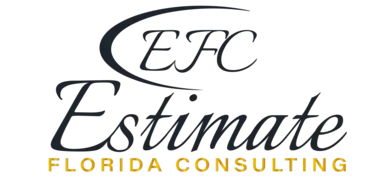- Homepage
- Construction Estimate Structure for Bank Review
Construction Estimate Structure for Bank Review
Leading provider of estimating services.
When planning a construction project—whether residential, commercial, or industrial—a Construction Estimate For Bank Loan plays a critical role in securing financing. Banks and financial institutions rely on a well-prepared construction estimate to assess the project’s feasibility, financial stability, and risk before approving funding. A detailed, structured estimate gives lenders confidence that funds will be used efficiently and that every aspect of the project—from materials and labor to contingency—is accounted for.
Without a properly structured Construction Estimate For Bank Loan, lenders may question the reliability of your budget and delay approval.
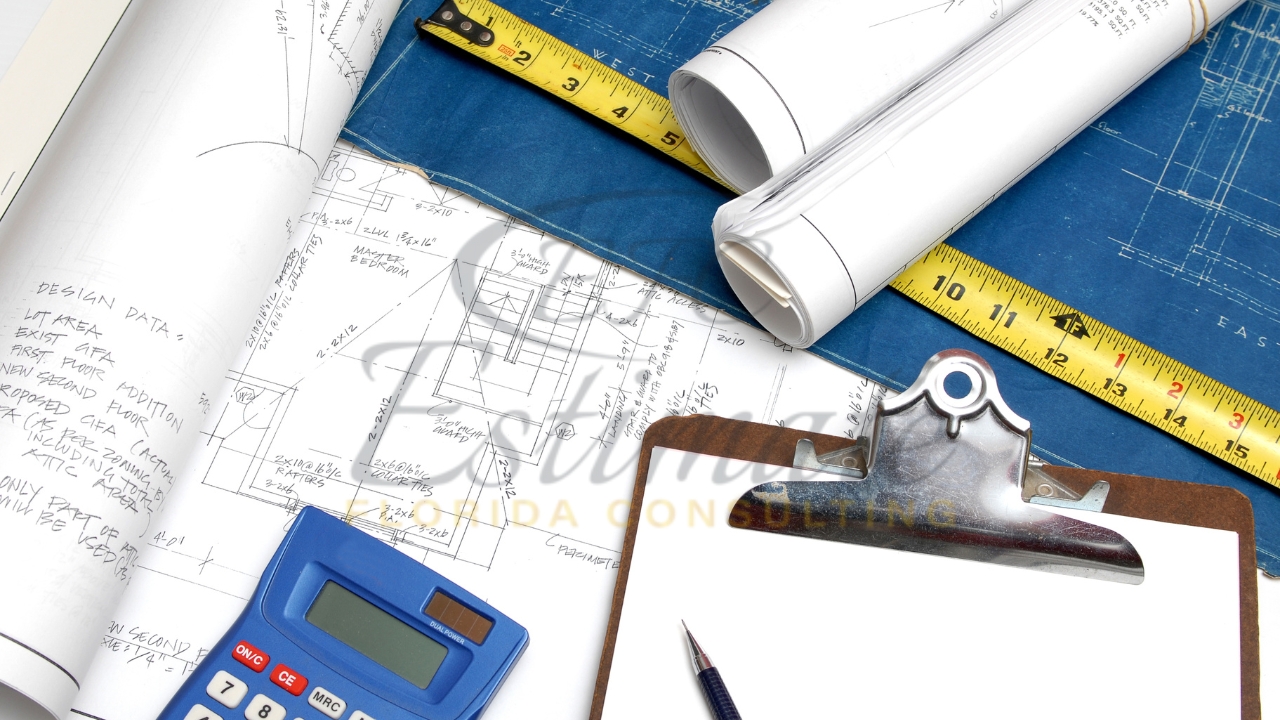
A well-documented estimate not only supports faster loan processing but also acts as a financial roadmap for the project owner, ensuring cost transparency and helping manage funds throughout construction.
Understanding Bank Requirements for Construction Estimates
Banks and financial institutions have a specific set of expectations when reviewing construction estimates. Their primary goal is to ensure that the project is financially viable and that the loan amount requested is justified by a realistic and detailed budget. Lenders typically look for accuracy, transparency, and completeness, meaning every aspect of the construction—materials, labor, permits, equipment, and contingency—needs to be clearly outlined. A construction estimate that lacks detail or is overly generalized may raise concerns about cost overruns, project delays, or mismanagement, potentially jeopardizing loan approval.
In addition to cost breakdowns, banks are also interested in project timelines and sequencing. A well-structured estimate should show how funds will be disbursed at different stages, such as site preparation, foundation work, framing, roofing, electrical, plumbing, and finishing. This ensures that the bank can assess cash flow needs and monitor fund usage effectively. Many banks also evaluate contingency allocations to confirm that there is a buffer for unexpected expenses, which minimizes risk to both the lender and the borrower.
Another critical aspect banks examine is alignment with regulatory and permitting requirements. Estimates should include potential permit fees, inspection costs, and compliance-related expenses. By addressing these factors upfront, project owners demonstrate thorough planning and financial responsibility, which enhances lender confidence. Understanding these requirements and tailoring your construction estimate to meet them is essential for securing timely approval and avoiding costly delays during the funding process.
Key Components of a Construction Estimate for Banks
A construction estimate intended for bank review must be comprehensive and well-structured, covering all cost elements of the project. Banks expect to see a clear breakdown of every expense, which helps them assess project feasibility and minimize lending risk. The essential components of a bank-ready construction estimate include:
Project Description and Scope
Begin with a detailed explanation of the project, including the type of construction, size, and purpose of the building. Clearly defining the scope helps banks understand the complexity of the project and ensures that the costs align with expectations. Include floor plans, site layout, and a brief description of the construction methods and materials to be used.
Material Costs
Material costs form a significant portion of any construction budget. Banks want to see line-item costs for items such as concrete, steel, lumber, drywall, roofing, and finishing materials. Providing accurate quantities and unit costs demonstrates careful planning and helps prevent disputes or funding shortfalls later in the project.
Labor Costs
Labor is another critical factor in construction budgeting. Estimates should include wages, benefits, and projected work hours for each trade involved in the project. A detailed labor estimate assures lenders that you have accounted for the human resources needed to complete the project on time and within budget.
Equipment and Machinery Costs
Large-scale construction often requires specialized equipment or machinery. Including equipment rental or purchase costs, maintenance, and operational expenses ensures that banks understand the full scope of project expenditures. This also prevents surprises during the project timeline.
Subcontractor Costs
If you are hiring subcontractors for specialized work—such as plumbing, electrical, or HVAC—these costs should be itemized. Providing detailed subcontractor quotes or contracts helps banks verify that the costs are realistic and justified.
Get High-Quality 3D Rendering Services Today!
Transform your space with stunning 3D Rendering that blends style, comfort, and functionality.
We Specialize in Both Residential and Commercial 3D Rendering Projects.
- Luxury Villas
- Apartment Complexes
- Modular Kitchens
- Bathrooms
- Office Buildings
- Shopping Malls
- Hospitals
- Hotels & Resorts
Contingency and Unexpected Costs
A bank-ready estimate must include a contingency fund, typically ranging from 5–15% of the total project cost, depending on project complexity and risk. Contingency covers unforeseen issues like material price increases, weather delays, or unexpected structural challenges. Clearly specifying contingency shows lenders that you are prepared for uncertainties.
Permits, Fees, and Regulatory Costs
Construction projects involve permits, inspections, and compliance-related fees. Itemizing these costs ensures banks know all necessary expenses are accounted for and prevents funding gaps during construction.
Design and Architectural Costs
Costs associated with architects, engineers, and designers should be included. Banks expect a clear estimate of these professional fees to verify that the project design is fully budgeted and that qualified professionals are involved.
By including all these components in a clear, organized manner, your construction estimate becomes bank-ready, showing lenders that you have thoroughly planned your project and considered every financial aspect. A detailed estimate not only increases the likelihood of loan approval but also serves as a reliable guide for managing your construction project efficiently.
Step-by-Step Structure of a Construction Estimate
Creating a construction estimate that is bank-ready requires a systematic and organized structure. Banks need clarity and detail, so the estimate should follow a logical flow, making it easy for lenders to review, verify, and approve. Here’s a step-by-step guide to structuring your estimate effectively:
Cover Page and Project Summary
Start with a cover page that includes the project name, location, owner, and contact details. Follow this with a project summary, which highlights the type of construction, total estimated cost, project timeline, and loan amount requested. This initial section provides banks with a quick overview before they dive into detailed numbers.
Detailed Line-Item Costs
The core of your estimate should include line-item costs for every component: materials, labor, equipment, subcontractors, permits, design fees, and contingency. Each line item should list quantity, unit cost, and total cost, giving banks full visibility into how each dollar will be spent. Tables are highly effective for presenting this information clearly.
Phase-Wise Budget Breakdown
Organize costs by construction phases, such as site preparation, foundation, framing, roofing, electrical, plumbing, interior finishes, and landscaping. This allows banks to see how funds will be allocated over time and helps in staged loan disbursements. Including phase-wise details also demonstrates thoughtful project planning and financial foresight.
Contingency and Allowances Section
Include a separate section for contingency funds and allowances for potential cost variations. Clearly explain the percentage of contingency, what it covers, and the rationale behind the amount. Lenders value this transparency as it shows preparedness for unforeseen events.
Supporting Notes and Assumptions
Banks appreciate when estimates include detailed notes and assumptions. For example, clarify material grade, labor rate assumptions, construction methods, or any exclusions. This section reduces confusion, prevents misinterpretation, and builds lender confidence.
Summary and Total Cost
Conclude the estimate with a total cost summary, including all components, contingency, and professional fees. This section should also highlight the loan request amount and any equity contributions by the project owner. A clear summary ensures that banks can quickly verify the completeness and accuracy of your estimate.
By following this structured approach, your construction estimate becomes professional, easy to understand, and fully bank-ready. A well-organized estimate reduces lender questions, accelerates loan approval, and serves as a reliable financial roadmap throughout your construction project.

Tips to Make Your Estimate Bank-Ready
To ensure your construction estimate is fully prepared for bank review, there are several practical strategies you can follow. A bank-ready estimate not only improves the likelihood of loan approval but also helps you manage your project efficiently. Here are some key tips:
Use Detailed Cost Breakdowns
Avoid lump-sum figures or vague estimates. Break down costs into materials, labor, equipment, subcontractors, permits, and professional fees. The more detailed your estimate, the easier it is for banks to evaluate its accuracy and feasibility. Line-item breakdowns also help in tracking actual expenses during construction.
Include Contingency Funds and Allowances
Banks expect to see a contingency allocation, typically 5–15% of the total project cost. Clearly define what the contingency covers, such as unexpected material price increases, labor delays, or unforeseen site conditions. This demonstrates foresight and reduces financial risk for both the borrower and the lender.
Separate Construction Phases
Organize your estimate by project phases, such as site preparation, foundation, framing, roofing, utilities, interiors, and finishes. A phase-wise breakdown shows banks how funds will be utilized over time and allows for staged loan disbursements based on project progress.
Highlight Assumptions and Notes
Include clear notes on assumptions, such as labor rates, material quality, and construction methods. Banks value transparency, and specifying these details reduces the chance of misinterpretation or funding delays.
Use Tables and Visual Aids
Presenting your estimate in tables, charts, or spreadsheets makes it easier for banks to review. Visual aids such as charts showing phase-wise cost allocation or pie charts for cost distribution can increase clarity and demonstrate professionalism.
Keep Documentation Ready
Along with the estimate, provide supporting documentation such as supplier quotes, subcontractor agreements, permit cost estimates, and architectural plans. This adds credibility to your estimate and assures the bank that your numbers are realistic and verifiable.
Review and Double-Check for Accuracy
Before submitting, carefully review the estimate for errors, omissions, or unrealistic assumptions. Inaccurate estimates can delay approval or result in loan reductions. Ensuring every number is checked and justified reinforces trust and confidence with lenders.
By following these tips, your construction estimate will be professional, comprehensive, and fully aligned with bank requirements. A detailed and transparent estimate not only speeds up loan approval but also provides a reliable guide for managing costs and resources throughout your construction project.
Common Mistakes to Avoid in a Bank-Ready Construction Estimate
Even the most experienced project owners can make errors when preparing a construction estimate for bank review. These mistakes can delay loan approval, reduce lender confidence, or lead to funding issues during construction. Understanding and avoiding these common pitfalls is essential for a successful project.
Underestimating Costs
One of the most frequent mistakes is underestimating material, labor, or contingency costs. Banks are wary of estimates that seem too low because they signal potential project overruns. Always use realistic costs based on supplier quotes, labor rates, and recent market trends, and include a contingency allocation to cover unexpected expenses.
Omitting Line Items
Leaving out essential components—such as permits, professional fees, equipment rentals, or site preparation—can create gaps in the budget. A complete estimate must capture every possible expense to ensure accuracy and prevent funding shortfalls.
Vague or Generalized Descriptions
Using ambiguous terms like “miscellaneous costs” without specifics can frustrate bank reviewers. Every item should have a clear description, quantity, unit cost, and total cost, providing full transparency and minimizing lender questions.
Ignoring Bank-Specific Requirements
Different banks have different expectations for construction estimates, including format, level of detail, and supporting documentation. Failing to comply with these requirements can result in delays or repeated requests for clarification. Always confirm the bank’s guidelines before submitting your estimate.
Failing to Include Contingency Funds
Skipping or underestimating contingency is a critical error. Banks expect a contingency buffer for unforeseen events, and a missing or inadequate allocation can make your estimate appear incomplete or risky.

Overlooking Timeline and Phase Details
Not showing a phase-wise timeline and cost allocation can make it difficult for banks to evaluate loan disbursement schedules. A structured, phase-based presentation is essential to communicate project planning and cash flow requirements.
Not Supporting the Estimate with Documentation
Estimates without supporting documents such as supplier quotes, subcontractor agreements, or permit cost breakdowns may be questioned. Providing verifiable documentation enhances credibility and speeds up bank review.
By avoiding these common mistakes, project owners can ensure their construction estimate is accurate, transparent, and bank-ready. Properly prepared estimates not only improve the chances of loan approval but also create a solid foundation for financial management throughout the construction process.
Real-World Example of a Bank-Ready Construction Estimate
To better understand how to prepare a construction estimate for bank review, let’s look at a mock example for a mid-sized commercial project. This example demonstrates how to structure the estimate clearly, include all cost components, and make it bank-ready.
Project Overview:
- Project Type: Commercial Office Building
- Size: 10,000 sq. ft.
- Location: Florida
- Total Estimated Cost: $1,250,000
- Contingency: 10% of total cost
Example Construction Estimate (Bank-Ready Format):
Cost Component | Description | Quantity / Units | Unit Cost ($) | Total Cost ($) |
Site Preparation | Clearing, grading, excavation | 1 lot | 25,000 | 25,000 |
Foundation | Concrete slab and footings | 10,000 sq. ft. | 10 | 100,000 |
Framing | Wood and steel framing | 10,000 sq. ft. | 20 | 200,000 |
Roofing | Shingle and waterproofing | 10,000 sq. ft. | 15 | 150,000 |
Electrical | Wiring, outlets, panels | 10,000 sq. ft. | 12 | 120,000 |
Plumbing | Piping, fixtures, labor | 10,000 sq. ft. | 10 | 100,000 |
HVAC | Installation of heating, ventilation, AC | 1 system | 90,000 | 90,000 |
Interior Finishes | Drywall, painting, flooring | 10,000 sq. ft. | 15 | 150,000 |
Exterior Finishes | Siding, painting, landscaping | 10,000 sq. ft. | 10 | 100,000 |
Contingency (10%) | Covers unforeseen costs | N/A | N/A | 125,000 |
Professional Fees | Architect, engineer, permits | N/A | N/A | 90,000 |
Equipment & Miscellaneous | Rentals, tools, on-site utilities | N/A | N/A | 50,000 |
Total Estimated Cost: $1,250,000
This example demonstrates how to present all major project costs, contingency funds, and professional fees clearly. Using a table with line-item costs allows banks to easily review the estimate, check assumptions, and verify that the requested loan aligns with realistic construction costs. Including notes or explanations for certain items, such as contingency percentage or professional fees, adds further transparency and credibility.
A bank-ready estimate like this serves as both a funding proposal and a construction roadmap, giving lenders confidence while guiding the project owner throughout the building process.
90% More Chances to Win Bids with Our Estimate!
Benefits of a Properly Structured Construction Estimate for Banks
A properly structured construction estimate is more than just a list of numbers—it plays a pivotal role in securing financing, maintaining transparency, and ensuring smooth project execution. Banks prefer estimates that are detailed, clear, and well-organized because they reduce uncertainty and risk. Here are the main benefits:
Improved Loan Approval Chances
Banks are more likely to approve loans when the construction estimate clearly shows how funds will be allocated. A structured estimate demonstrates financial planning, risk management, and credibility, reassuring lenders that the borrower has considered all aspects of construction costs.
Enhanced Transparency
A detailed, line-item breakdown provides full visibility into the project’s expenses, from labor and materials to permits and contingency funds. This transparency builds trust with lenders and reduces the number of follow-up questions or requests for clarification.
Easier Loan Disbursement Management
When the estimate is organized by construction phases, banks can release funds in stages, ensuring that money is used as planned. Phase-wise disbursements protect both the borrower and the lender, making it easier to monitor progress and avoid overspending.
Accurate Budget Tracking
A comprehensive estimate helps project owners track actual costs against planned costs throughout the construction process. Banks appreciate this because it minimizes financial discrepancies and ensures that the loan is being utilized effectively.
Risk Mitigation
Including contingency funds and allowances in a well-structured estimate shows lenders that the borrower has prepared for unforeseen circumstances, such as material price fluctuations, labor delays, or unexpected site conditions. This proactive approach reduces the risk for both parties.
Professional Presentation
A clean, professional estimate—with tables, charts, and supporting notes—demonstrates organization, competence, and attention to detail. Banks are more likely to respond positively to estimates that are easy to read, verify, and analyze.
Serves as a Construction Roadmap
Beyond loan approval, a bank-ready estimate serves as a guideline for managing the project. It helps project owners plan procurement, schedule work, and monitor progress, ensuring that the project remains on budget and on time.
By providing a properly structured construction estimate, project owners can increase lender confidence, streamline loan approvals, and create a clear plan for managing costs. A well-prepared estimate is not just a document for banks—it’s a strategic tool for successful construction project management.

Key Elements Banks Look for in a Construction Estimate
When submitting a construction estimate for bank review, it’s essential to understand what lenders focus on. Banks want to ensure the project is financially sound, feasible, and well-planned, so your estimate should clearly address their key concerns. Here are the main elements banks pay attention to:
Complete and Accurate Cost Breakdown
Banks expect a detailed breakdown of all costs, including materials, labor, equipment, subcontractors, permits, professional fees, and contingency funds. Each item should include a description, quantity, unit cost, and total cost. Accuracy in these figures reassures lenders that the project budget is realistic and well-researched.
Contingency and Risk Planning
Lenders want to see that unexpected costs are accounted for. A clearly defined contingency fund, typically 5–15% of total project costs, signals that the borrower has prepared for unforeseen issues such as material price changes, labor delays, or site complications.
Phase-Wise Cost Allocation
Banks look for estimates organized by construction phases, such as site preparation, foundation, framing, roofing, utilities, interiors, and finishes. This shows how funds will be spent over time and enables staged loan disbursement aligned with project milestones.
Supporting Documentation
Estimates accompanied by supplier quotes, subcontractor agreements, permit cost estimates, and architectural or engineering plans are highly valued. Supporting documents provide evidence that the numbers in your estimate are verifiable and not arbitrary.
Assumptions and Notes
Including clear assumptions, such as labor rates, material quality, and construction methods, reduces ambiguity and helps banks understand the basis of your calculations. Lenders appreciate transparency and will have more confidence in your estimate when assumptions are clearly stated.
Loan Request vs. Total Project Cost
Banks compare the requested loan amount to the total project cost to determine feasibility. The estimate should clearly show owner equity contributions, loan request, and total budget, giving lenders confidence that funding is sufficient to complete the project.
Professional Presentation
A well-organized estimate with tables, charts, and summaries demonstrates professionalism and attention to detail. Clean formatting and clarity in presentation make it easier for banks to review, reducing questions and potential delays.
By ensuring your construction estimate includes these key elements, you increase lender confidence, minimize delays, and improve the chances of loan approval. Banks are not just looking at numbers—they want to see a clear, realistic, and well-planned financial roadmap for your construction project.
How to Prepare Your Estimate for Bank Submission?
Preparing a construction estimate for bank review requires more than just compiling numbers—it’s about presenting a complete, transparent, and professional financial plan. Following these steps ensures your estimate is both comprehensive and lender-ready.
Organize Costs by Category and Phase
Begin by breaking down costs into categories such as site work, foundation, framing, roofing, electrical, plumbing, HVAC, finishes, and miscellaneous expenses. Within each category, divide costs by construction phases. This phase-wise organization helps banks understand how funds will be allocated over time and ensures clear tracking of expenditures during the project.
Include Contingency and Allowances

Always allocate contingency funds, typically between 5–15% of total project costs, to cover unexpected expenses. Include allowances for items with variable costs, such as finish materials or appliances. Clearly labeling these in your estimate demonstrates financial foresight and reduces lender concerns about overruns.
Provide Detailed Line-Item Costs
Each cost should have a detailed description, unit measurement, unit cost, and total cost. Avoid vague terms like “miscellaneous” or “other expenses.” Detailed line items allow banks to verify assumptions, evaluate realism, and assess risk effectively.
Attach Supporting Documentation
Include quotes from suppliers, subcontractor agreements, permit estimates, architectural or engineering plans, and any other documentation that validates your numbers. Supporting documents provide evidence of due diligence, enhancing the credibility of your estimate and speeding up the review process.
Include Assumptions and Explanatory Notes
Clearly state any assumptions regarding labor rates, material quality, construction methods, and schedule timelines. Adding explanatory notes helps banks understand the basis of your calculations and minimizes confusion or requests for clarification.
Summarize Total Costs, Loan Request, and Owner Contribution
Create a clear summary showing total project costs, contingency allocation, loan request amount, and the borrower’s equity contribution. This allows the bank to quickly evaluate funding adequacy and project feasibility.
Review for Accuracy and Consistency
Double-check all calculations, unit prices, and totals. Consistency across categories and phases is critical—any discrepancies can raise red flags and delay loan approval. Ensure your estimate is professional, free of errors, and formatted for readability.
Present Professionally
Use clean tables, headings, and charts to improve readability. A professional layout reflects attention to detail and competence, increasing lender confidence in the project and the borrower.
By carefully preparing your construction estimate for bank submission using these steps, you ensure a well-documented, transparent, and lender-friendly proposal. A structured, detailed, and professional estimate not only improves your chances of loan approval but also provides a roadmap for successful construction management.
Tips to Ensure Your Estimate Meets Bank Expectations
Creating a construction estimate that banks readily approve requires more than just listing costs—it involves strategic preparation, clarity, and attention to detail. By following these tips, you can make your estimate both lender-friendly and effective for project management.
Be Thorough and Transparent
Banks appreciate estimates that cover all cost components. Include every expense, from labor and materials to permits, professional fees, equipment rentals, and contingency funds. Avoid leaving gaps or ambiguous entries, as they can create doubts about project feasibility. Full transparency signals that the project is well-planned and realistic.
Use Realistic Cost Assumptions
Base your costs on current market rates for labor, materials, and subcontractor fees. Inflated or underestimated figures can create problems during bank review or later in the project. Research local construction costs and include backup documentation to support your assumptions.
Include Contingency and Allowances
Contingency funds are essential for managing unexpected costs such as material price fluctuations, weather delays, or design changes. Banks expect estimates to reflect adequate risk planning—typically 5–15% of total construction costs. Clearly separate contingency funds from regular line items to demonstrate proper planning.
Organize by Phases and Categories
Structuring your estimate by construction phases and cost categories makes it easier for banks to understand fund allocation. For example, separate site preparation, foundation, framing, roofing, electrical, plumbing, interiors, and finishes. This level of detail ensures lenders can track spending and assess project progress efficiently.
Get 5 New Projects in the Next 7 Days With Our System
Provide Supporting Documentation
Attach quotes, proposals, or agreements from suppliers, subcontractors, or professionals. Banks are more likely to approve estimates that are backed by verifiable documentation, as it shows that your numbers are not arbitrary and have been carefully considered.
Use Clear Presentation and Formatting
A professional layout with tables, headings, and charts improves readability and creates a strong impression. Organized formatting helps banks quickly review your estimate, reduces confusion, and enhances confidence in your planning capabilities.
Highlight Owner Contributions
Clearly show the borrower’s equity or upfront contributions alongside the requested loan. Banks evaluate the ratio of owner funds to loan amount to gauge financial commitment. Demonstrating strong personal investment increases lender trust.
Review and Revise Carefully
Double-check all calculations, units, and totals. Consistency across line items, categories, and phases ensures accuracy. A polished, error-free estimate reduces questions, speeds up review, and strengthens the perception of professionalism.
Include Assumptions and Notes
List any assumptions about labor rates, material specifications, construction methods, and schedules. Notes explaining special considerations help banks understand the rationale behind your numbers, reducing follow-up queries and delays.
By following these tips, your construction estimate will meet bank expectations, improve the likelihood of loan approval, and serve as a detailed roadmap for your project. A well-prepared estimate not only satisfies lenders but also guides you through budgeting, scheduling, and managing construction efficiently.

Common Mistakes to Avoid in Bank-Ready Construction Estimates
Even the most carefully planned construction projects can face challenges if the estimate submitted to the bank is flawed. Avoiding common mistakes is crucial to ensuring smooth loan approval and maintaining lender trust. Here are the most frequent errors to watch out for:
Incomplete or Missing Cost Items
Omitting key components such as permits, utility connections, professional fees, or contingency funds can raise red flags for banks. Every expense, no matter how minor, should be accounted for to avoid delays or loan rejection.
Overly Vague Descriptions
Generic terms like “miscellaneous expenses” or “other costs” without explanation make it difficult for lenders to understand the estimate. Detailed line-item descriptions for materials, labor, and services are essential for clarity and verification.
Unrealistic Cost Assumptions
Using outdated or overly optimistic pricing for materials and labor can lead to underfunded projects or lender skepticism. Estimates should reflect current market rates and include supporting quotes or documentation wherever possible.
Neglecting Contingency Funds
Banks expect to see contingency allowances to cover unexpected expenses such as delays, design changes, or supply cost fluctuations. Failing to include contingency funds can signal poor planning and increase perceived risk.
Poor Organization and Formatting
A disorganized estimate with unclear categories, inconsistent totals, or missing phase allocations creates confusion. Clean tables, headings, charts, and phase-wise breakdowns make the estimate professional and easy to review, increasing lender confidence.
Skipping Supporting Documentation
Providing an estimate without supplier quotes, subcontractor bids, or architectural plans reduces credibility. Supporting documentation validates your numbers and demonstrates due diligence, which is critical for bank approval.
Ignoring Loan vs. Total Cost Ratio
Banks assess the requested loan against the total project cost and owner contribution. Failing to clearly show these figures or having an insufficient equity contribution can lower approval chances.
Not Stating Assumptions Clearly
Every estimate should explain assumptions regarding labor rates, material quality, construction methods, and project timelines. Lack of clarity here can result in misunderstandings and delays in approval.
Failing to Review and Verify
Errors in calculations, unit measurements, or totals reflect poorly on the borrower. Always review and double-check the estimate before submission to avoid avoidable mistakes that could affect lender confidence.
By avoiding these common pitfalls, you can ensure that your construction estimate is accurate, transparent, and lender-ready, increasing the likelihood of loan approval and smoother project execution. A mistake-free estimate demonstrates professionalism and financial planning, which are key to successful construction financing.
Sample Structure of a Bank-Ready Construction Estimate
Creating a clear and professional structure for your construction estimate is essential for bank review. A well-organized estimate not only improves lender confidence but also serves as a roadmap for project management and cost tracking. Below is a sample structure that covers all critical elements:
Project Overview
Begin with a brief description of the project, including location, size, scope, and objectives. This section should outline the type of construction (residential, commercial, or mixed-use), key design features, and project timelines. Banks use this overview to understand what the funds will support and the overall scale of the project.
Cost Summary
Provide a high-level summary of total project costs, loan request, and owner equity. Include a breakdown by major categories such as site work, foundation, structure, interiors, finishes, and contingencies. This allows lenders to quickly evaluate the financial feasibility of the project.

Phase-Wise Breakdown
Divide the project into construction phases, such as:
- Site Preparation and Excavation: Clearing, grading, and preparing the land.
- Foundation and Structural Work: Footings, slabs, framing, and load-bearing structures.
- Exterior Work: Roofing, siding, windows, and doors.
- Mechanical, Electrical, and Plumbing (MEP): HVAC, plumbing lines, electrical systems, and fixtures.
- Interior Finishes: Flooring, cabinetry, painting, lighting, and appliances.
- Landscaping and Site Finishes: Outdoor work, driveways, and exterior features.
Each phase should list line-item costs, quantities, unit prices, and total amounts. This phased structure ensures that lenders can track fund disbursement and project progress efficiently.
Line-Item Details
Provide detailed line items under each phase, covering:
- Materials: Type, quantity, unit cost, and total cost
- Labor: Estimated hours, hourly rates, and total labor cost
- Equipment: Rental or purchase costs for construction machinery
- Subcontractors: Agreements and quotes for specialized work
- Permits and Fees: Local building permits, inspections, and approvals
- Contingency and Allowances: A separate line showing the funds reserved for unexpected costs
This level of detail demonstrates accuracy and transparency, two key factors banks evaluate.
Assumptions and Notes
Include a section detailing all assumptions, such as labor rates, material choices, project timelines, and construction methods. Banks value clarity, and stating assumptions upfront reduces confusion and potential follow-up questions.
Supporting Documentation
Attach any quotes, contracts, architectural plans, or permit estimates as references. Supporting documents validate the numbers in your estimate and show that you have researched costs thoroughly, increasing the credibility of your submission.
Professional Presentation
Use clean formatting, tables, and charts for readability. Include a summary page for quick reference and an appendix for detailed line items and supporting documents. A professional layout reflects attention to detail and project preparedness, both of which increase lender confidence.
By following this structured template, your construction estimate becomes a comprehensive, professional, and bank-ready document. This approach not only enhances the likelihood of loan approval but also helps you manage construction costs effectively, minimize surprises, and maintain a smooth workflow from start to finish.
90% More Chances to Win Bids with Our Estimate!
Frequently Asked Question
A construction estimate for bank review is a detailed financial document that outlines all project costs — including materials, labor, permits, and contingencies — required to complete a construction project. Banks use this estimate to evaluate the project’s feasibility and determine loan approval.
Banks rely on detailed construction estimates to ensure that loan funds are allocated responsibly and that the project is financially viable. A structured estimate minimizes risk for lenders and shows that the borrower has carefully planned every aspect of construction.
A bank-ready construction estimate should include:
Project scope and description
Material and labor costs
Equipment and subcontractor expenses
Professional and permit fees
Contingency funds
Phase-wise cost breakdown
Supporting documentation (quotes, drawings, contracts)
Your estimate should be extremely detailed — with line-item breakdowns for each cost component, quantities, unit prices, and total amounts. Vague or lump-sum estimates can delay approval or raise red flags with lenders.
Most banks expect contingency allocations between 5% and 15% of total project costs, depending on complexity. This buffer reassures lenders that unforeseen costs or delays have been considered.
Comprehensive Trade-Specific Estimates
At Estimate Florida Consulting, we offer detailed cost estimates across all major trades, ensuring no part of your project is overlooked. From the foundation to the finishing touches, our trade-specific estimates provide you with a complete and accurate breakdown of costs for any type of construction project.
Our Simple Process to Get Your Estimate
Upload Plans
Submit your project plans, blueprints, or relevant documents through our online form or via email.
Receive Quotation
We’ll review your project details and send you a quote based on your scope and requirements.
Confirmation
Confirm the details and finalize any adjustments to ensure the estimate meets your project needs.
Get Estimate
Receive your detailed, trade-specific estimate within 1-2 business days, ready for your project execution.



Our Clients & Partners
We pride ourselves on building strong, lasting relationships with our clients and partners across the construction industry.



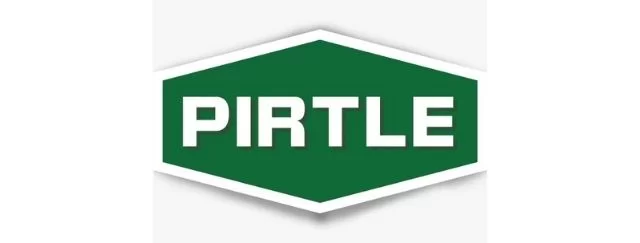


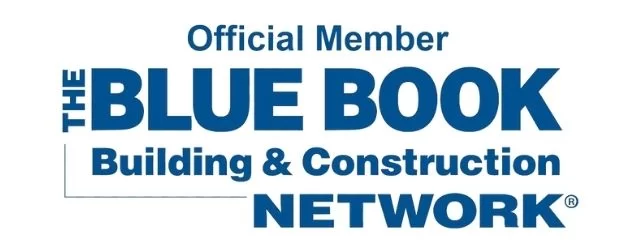
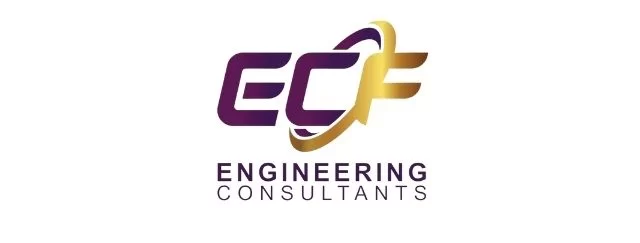



What Our Clients Say?
We take pride in delivering accurate, timely, and reliable estimates that help contractors and builders win more projects. Our clients consistently praise our attention to detail, fast turnaround times, and the positive impact our estimates have on their businesses.
Estimate Florida Consulting has helped us win more bids with their fast and accurate estimates. We trust them for every project!





